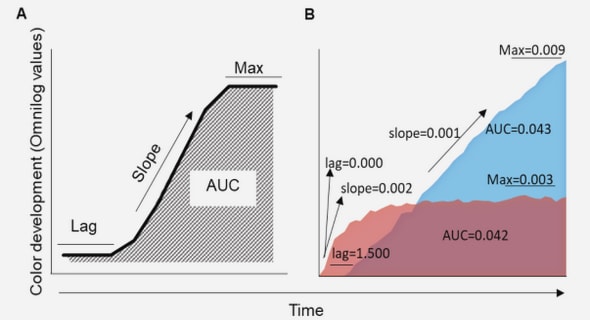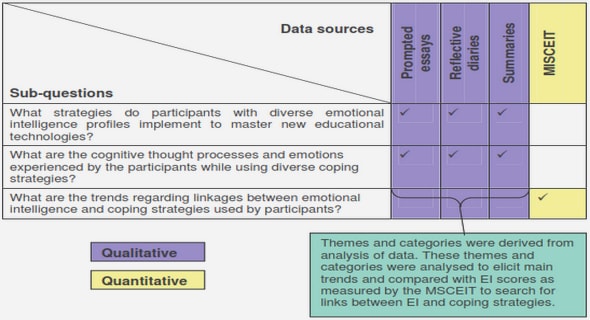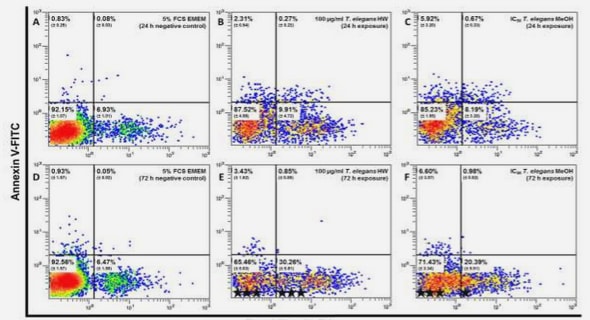Get Complete Project Material File(s) Now! »
INTRODUCTION
Towards the end of 1989, President FW de Klerk established a committee to oversee the dismantling and adestruction of South Africa’s “nuclear devices” (De Klerk 1993). In early 1990, the De Klerk government decided that: all the nuclear devices should be dismantled and destroyed; all the nuclear material in Armscor’s [Armaments Development and Production Corporation of South Africa] possession be recast and returned to the AEC [Atomic Energy Corporation of South Africa] where it should be stored according to internationally accepted measures; Armscor’s facilities should be decontaminated and be used only for non-nuclear commercial purposes; after which South Africa should accede to the Non-Proliferation Treaty, thereby submitting all its nuclear materials and facilities to international safeguards (De Klerk 1993).An immediate task of the South African government after the 1989 decision to terminate the nuclear weapons programme was to decommission several nuclear weapons facilities in preparation for inspections by the International Atomic Energy Agency (IAEA) whilst maintaining the safety and security of the country’s nuclear weapons equipment and stocks of highly-enriched uranium (HEU). More importantly, South Africa had to convince the international community of the sincerity of its intentions regarding nuclear non-proliferation. Apart from these developments, South Africa was also in the early phases of its political transition to democratic rule.
Literature survey
Although scholarship on South Africa’s nuclear weapons programme and its post apartheid foreign policy has proliferated (see for example De Villiers, Jardine and Reiss 1993; Masiza 1993; Stumpf 1995a & 1995b; O’Meara 1996; Fig 1998; Van Vuuren 2003; Sanders 2006; and Venter 2008) much less scholarship has been devoted to post-apartheid South Africa’s nuclear diplomacy. Several themes and trends are evident in the existing scholarship on post-apartheid South Africa’s nuclear diplomacy. Firstly, authors have predominantly focused on the period immediately after 1994 until 1999, namely the Mandela presidency’s nuclear diplomacy (Motumi 1995; Muller 1996; Masiza & Landsberg 1996; Masiza 1998; Shelton 2000a, 2000b & 2006; Long & Grillot 2000; Harris, Hatang & Liberman 2004; Taylor 2006; Fig 2005 & 2009). This trend coincides with a general trend in post-
1994 analyses of South Africa’s foreign policy where the idealism of the Mandela era is referred to in the context of the prodigal’s return as a middle, African and regional power, and a bridge builder par excellence (Barber 2004).
Evaluate the research findings and make recommendations
The research problem is demarcated with reference to the following considerations and limitations of the study. Firstly, the study’s conceptual focus is limited to nuclear diplomacy as earlier defined. Secondly, for analytical purposes, the study is limited to four case studies representative of South Africa’s construction and conduct of nuclear diplomacy. These are the nuclear non-proliferation export control regimes (especially in terms of the NSG, the ZA and the WA); South Africa’s relations with the IAEA; South Africa and the African Nuclear Weapon Free Zone (ANWFZ) in terms of the Pelindaba Treaty; and the nuclear non-proliferation regime in terms of the NPT. These case studies represent South Africa’s approach to the practice of nuclear diplomacy in a multilateral context which, in some instances, is supplemented by bilateral diplomacy. These case studies have also remained on and dominated the global nuclear agenda since 1990. Moreover, these cases represent the most dynamic areas of South Africa’s nuclear diplomacy since 1990 as evidenced by the establishment of the ANWFZ in 2009 and South Africa’s leading role in the establishment of continental nuclear institutions.
Methodology
The theoretical approach of this study on South Africa’s nuclear diplomacy is one of constructivism, which maintains that states construct or reconstruct their identities, normative behaviour, roles and interests according to their interests, and vice versa in a mutually constitutive manner (Zehfuss 2002; Reus-Smit 2005). The study is qualitative in nature. Following an inductive method, the selected case studies are utilised to determine certain diplomatic styles and practices and use of instruments. To the extent that a narrative description of some of the main developments in South Africa’s nuclear diplomacy from 1990 until 2010 will be presented, the study adds to the diplomatic history of South Africa.
CHAPTER ONE: INTRODUCTION
1. Introduction
2. Literature survey
3. Formulation and demarcation of the research problem
4. Methodology
5. Structure of the research
6. Conclusion
CHAPTER TWO: NUCLEAR DIPLOMACY: A CONCEPTUAL FRAMEWORK
1. Introduction
2. Conceptual analysis as a research method
3. Constructivism: selected theoretical aspects
4. The strands of constructivism
5. Criticism made against Wendt’s constructivism
6. Diplomacy: selected theoretical aspects
6.1 Defining diplomacy
6.2 Typology of diplomacy
6.3 Parameters of diplomacy
6.4 Norms and diplomacy
6.5 Identity, interests and diplomacy
7. Nuclear diplomacy
7.1 Context of nuclear diplomacy
7.2 Nature and scope of nuclear diplomacy
7.3 Forms of nuclear diplomacy
7.4 The meaning, implications and utility of nuclear diplomacy
7.5 Elements of nuclear diplomacy
7.6 Power, authority and nuclear diplomacy
8. Niche diplomacy
9. Conclusion
CHAPTER THREE: SOUTH AFRICA AND THE NUCLEAR NON-PROLIFERATION EXPORT CONTROL REGIMES
1. Introduction 67
2. Nuclear non-proliferation export control regimes: definition and utility
3. The principal nuclear non-proliferation export control regimes
3.1 The Zangger Committee
3.2 The Nuclear Suppliers Group
3.3 The Wassenaar Arrangement on Export Controls for Conventional Arms and Dual-Use Goods and Technologies 7
3.4 The Missile Technology Control Regime and The Hague Code of Conduct against Ballistic Missile Proliferation 78
3.5 The New Agenda Coalition 86
4. South Africa’s nuclear non-proliferation export control policy and mechanisms 89
4.1 The diplomatic context of South Africa’s involvement in nuclear export regimes 89
4.2 The sources of South Africa’s nuclear non-proliferation export control policy 94
4.3 South Africa’s nuclear non-proliferation export control policy 95
4.4 South Africa’s nuclear non-proliferation export control mechanisms 97
4.4.1 The Council for the Non-Proliferation of Weapons of Mass Destruction 98
4.4.2 The National Conventional Arms Control Committee
5. Concerns about South Africa’s post-1990 commitment to nuclear non- proliferation 104
5.1 The AQ Khan nuclear proliferation network in South Africa
5.1.1 The Wisser Affaire
5.1.2 The implications of the AQ Khan legacy
6. An assessment of South Africa’s role and identity regarding the nuclear non-proliferation export control regimes
6.1 South Africa’s state identity and national interests
6.2 South Africa’s diplomatic roles and strategies
6.3 South Africa’s norm entrepreneurship and leadership
7. ConcIusion
CHAPTER FOUR: SOUTH AFRICA AND THE INTERNATIONAL ATOMIC ENERGY AGENCY
1. Introduction
2. South Africa’s pre-1990 relations with the International Atomic Energy Agency
2.1 South Africa’s role in the establishment of the International Atomic Energy Agency (1953-1964)
2.2 South Africa’s role in the International Atomic Energy Agency (1965 – 1989)
3. South Africa’s post-1990 relations with the International Atomic Energy Agency 132
3.1 The legal and diplomatic framework of South Africa’s post-1990 relations with the International Atomic Energy Agency
3.1.1 The verification process and the implementation of the Safeguards Agreement
3.1.2 South Africa’s bilateral agreements with the International Atomic Energy Agency
3.1.3 Multilateralism as South African diplomatic practice
3.2 Selected case studies of South Africa’s relations with the International Atomic Energy Agency
3.2.1 Membership of the Board of Governors
3.2.2 Article VI of the Statute
3.2.3 Leadership of the Board of Governors
3.2.4 The Nuclear Fuel Reserve
3.2.5 The AQ Khan network and the Wisser Affaire
3.2.6 The SAFARI-1 conversion and isotope production
4. An assessment of South Africa’s relations with the International
Atomic Energy Agency
4.1 The African Agenda and South-South cooperation
4.2 North-South cooperation
4.3 Norms and state identity
4.4 South Africa’s diplomatic conduct at the International Atomic Energy Agency
5. Conclusion
CHAPTER FIVE: SOUTH AFRICA AND THE AFRICAN NUCLEAR WEAPON FREE ZONE TREATY
1. Introduction 173
2. Nuclear weapons free zones
3. The evolution of the Treaty of Pelindaba
3.1 The origins of Africa’s nuclear non-proliferation position
3.2 The resumption of negotiations on an African nuclear weapon free zone
3.3 Efforts to include South Africa in negotiations
3.4 Negotiating and drafting the treaty on a denuclearised Africa
4. South Africa and the Treaty of Pelindaba
4.1 First Conference of Parties to the Treaty of Pelindaba (November 2010)
4.2 First Ordinary Session of the AFONE (May 2011)
5. An assessment of South Africa’s nuclear diplomacy in Africa
5.1 South Africa’s African Agenda
5.2 South Africa’s niche diplomacy in Africa
5.3 South Africa’s state identity and power on nuclear issues in Africa
5.4 The perfomative aspects of South Africa’s nuclear diplomacy in Africa
6. South Africa’s nuclear diplomacy challenges in Africa
7. Conclusion
CHAPTER SIX: SOUTH AFRICA AND THE TREATY ON THE NON-PROLIFERATION OF NUCLEAR WEAPONS
1. Introduction
2. The origins and provisions of the Treaty on the Non-Proliferation of Nuclear Weapons
3. South Africa’s pre-1991 nuclear diplomacy on the Treaty on the Non-Proliferation of Nuclear Weapons
4. The 1995 Review and Extension Conference
4.1 South Africa’s participation in the Preparatory Committee Conferences
4.2 South Africa’s preparation for the Review and Extension Conference
4.3 South Africa’s nuclear diplomacy at the Review and Extension Conference
4.4 An assessment of South Africa’s nuclear diplomacy
at the 1995 Review and Extension Conference
5. The 2000 Review Conference
5.1 Events preceding the 2000 Review Conference
5.2 South Africa’s nuclear diplomacy at the 2000 Review Conference
5.3 An assessment of South Africa’s nuclear diplomacy at the 2000 Review Conference
6. The 2005 Review Conference
6.1 Events preceding the 2005 Review Conference
6.2 South Africa’s nuclear diplomacy at the 2005 Review Conference
6.3 The failure of the 2005 Review Conference
6.4 An assessment of South Africa’s nuclear diplomacy at the 2005 Review Conference
7. The 2010 Review Conference
7.1 Events preceding the 2010 Review Conference
7.2 South Africa’s pre- 2010 Review Conference nuclear diplomacy
7.3 South Africa’s nuclear diplomacy at the 2010 Review Conference
7.4 An assessment of South Africa’s nuclear diplomacy at the 2010 Review Conference
8. An assessment of South Africa’s nuclear diplomacy in the context of the Treaty on the Non-Proliferation of Nuclear Weapons
9. Conclusion
CHAPTER SEVEN: EVALUATION AND RECOMMENDATIONS
1. Introduction
2. Analytical and theoretical framework of the study
3. Summary of chapters
3.1 South Africa and the nuclear non-proliferation export control regime
3.2 South Africa and the International Atomic Energy Agency
3.3 South Africa and the Treaty of Pelindaba
3.4 South Africa and the Treaty on the Non-Proliferation of Nuclear Weapons
4. Main findings of study
4.1 South Africa’s practice of nuclear diplomacy
4.2 South Africa’s power and nuclear diplomacy
4.3 South Africa’s construction of norms, identity and interests
4.4 The future of South Africa’s nuclear diplomacy
5. Ontological contributions of study
6. Epistemological contributions of this study
7. Practical implications of the study
8. Recommendations for future research
9. Final observations
Bibliography
GET THE COMPLETE PROJECT
SOUTH AFRICA’S NUCLEAR DIPLOMACY, 1990-2010: SECURING A NICHE ROLE THROUGH NORM CONSTRUCTION AND STATE IDENTITY


